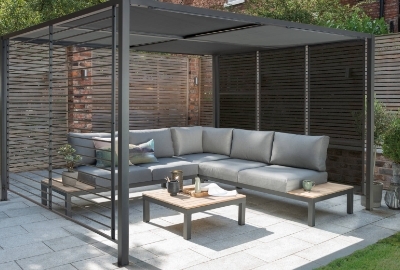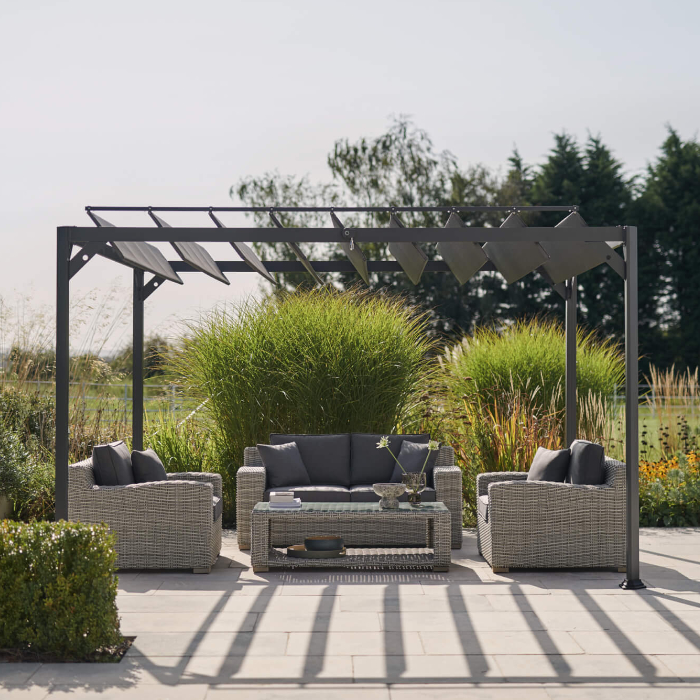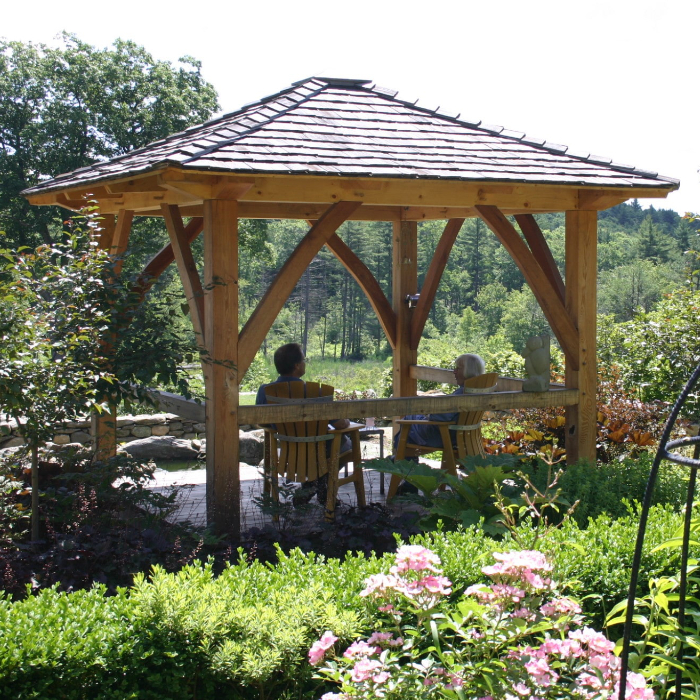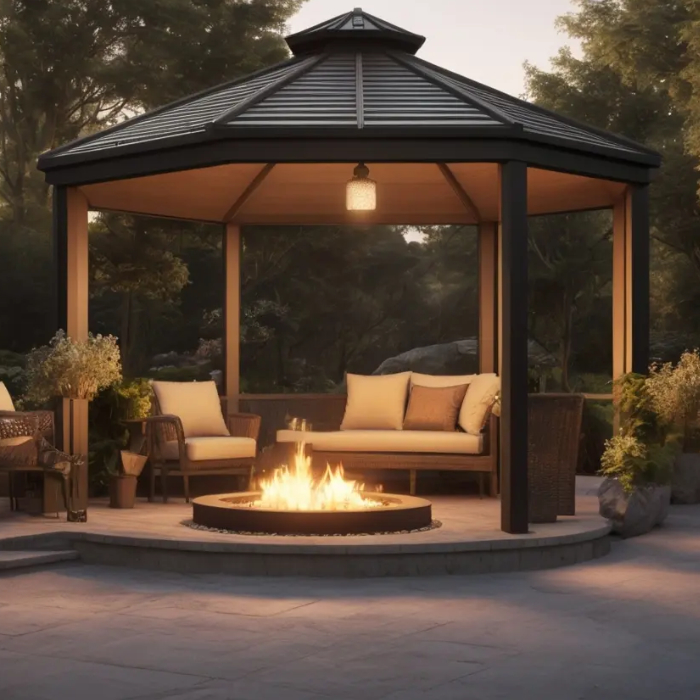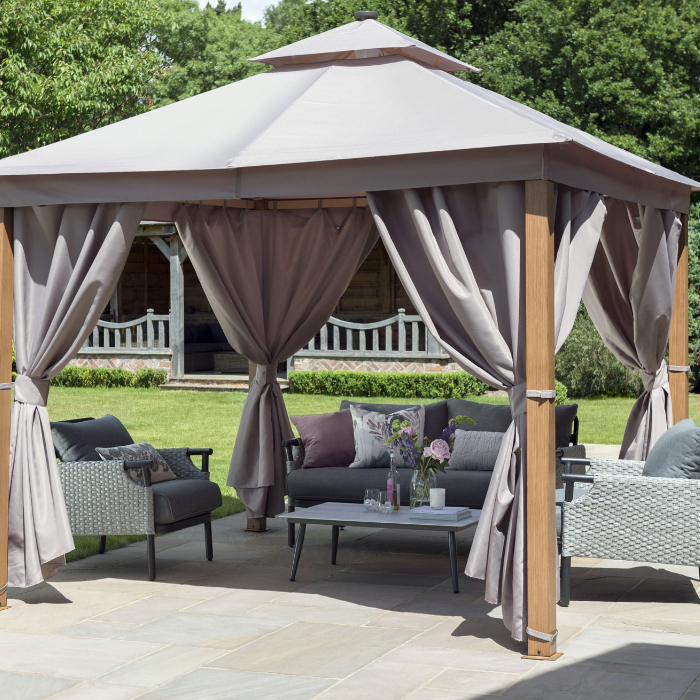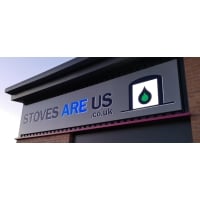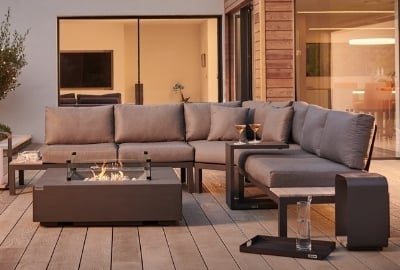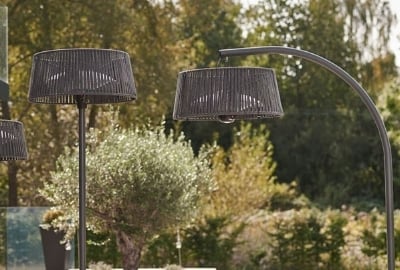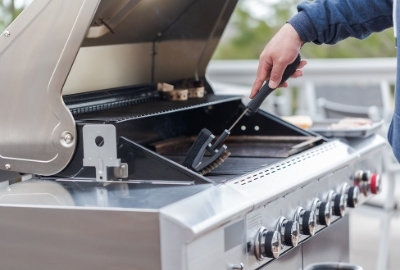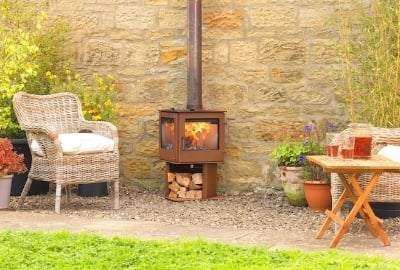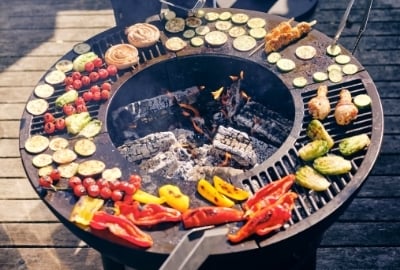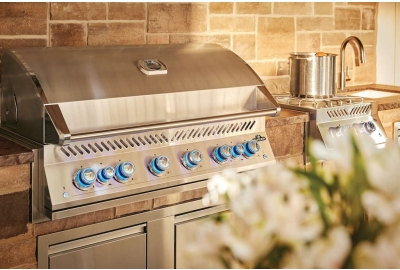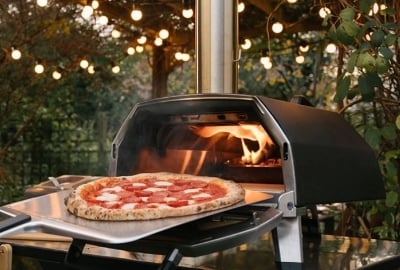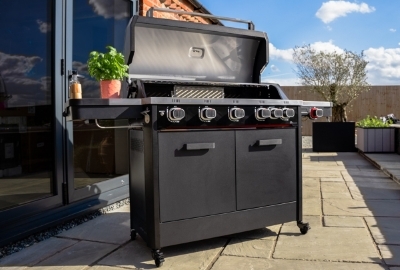Creating a functional and attractive outdoor living space with a weatherproof structure can enhance your garden area, it carves out a relaxing shaded spot that could also be used to entertain al fresco. By adding a piece of luxury garden furniture you can make the most of your garden or patio with a stylish aluminium pergola or gazebo. In this edit, we’ll explore the key differences and similarities between pergolas, pergodas, pagodas and even gazebos. There doesn’t seem to be a clear distinction on how companies market these outdoor buildings so we’re here to untangle the confusion.
Contents
Is a pergola right for my outdoor space?
Why would you buy a pergola without a roof?
What is a pergoda?
What is a pagoda?
What is a gazebo?
The differences summarised
Is a Pergola right for my outdoor space?
A pergola is a square or rectangular-shaped outdoor structure that is made of columns and posts of either timber or aluminium. A traditional pergola has a slatted or louvred roof that can open or close and they are most commonly seen on a tiled patio space but there are wall-leaning pergolas available for those that have a little less space. Lots of our pergolas can be upgraded with additional side panels, screens or blinds for extra shade or to create an outdoor entertainment space and shade the TV screen to reduce the glare from the sun. Lots of our contemporary garden pergolas are made from all-weather heat transfer aluminium which is powder-coated in a choice of colours like black, white or even wood-effect. Pergolas are a fantastic decorative focal point in your garden but they do come at a cost, you can pay upwards of £1000 for a good quality pergola so think hard about the practical uses before you invest.
Key features of a pergola
- Pergolas are multifunctional and can help you to take advantage of your outdoor space
- Create a shaded area which is especially useful if you have young children or pets
- If you’re lucky enough to own a hot tub they can shelter this feature
- Expand an existing outdoor space or bring two areas of your garden together
- Relatively easy to construct and can be built within a few hours
- Offer a flexible area with shelter whilst still allowing a little sunlight in
- Rainwater will often drain from inside the posts of the pergola
- If you’re DIY savvy then you may wish to build your own pergola out of timber
- Pergolas help to create a beautiful and practical space in your garden
- The design is very elegant and seamless
- The most popular type of garden structure for shade in the UK
Why would you buy a pergola without a roof?
This can be a controversial topic as other than being aesthetically stunning a pergola without a roof doesn’t serve too much practical purpose in the UK, however, there are a few reasons why you might want one for your garden. A pergola with no roof can be used for trailing plants that like to climb or for zoning/dividing areas in your garden. With a nice seating area, we’ve seen some great spaces on Pinterest where people have fashioned these areas into places to meditate or just relax, we think there are plenty of advantages to having this type of space in your garden.
What is a pergoda?
Simply put, a pergoda is exactly the same as a pergola but it features a fixed roof that is usually made up of solid slats or tiles. A pergoda over decking or tiled patio area can create an intimate dining space, adding the same luxurious feel that a pergola would. The drawback of this type of garden structure is that it does not offer the flexibility of a pergola which has an adjustable roof to let in sunlight when it is needed. A pergoda is still a popular choice, they provide a more traditional aesthetic than an aluminium pergola and are an excellent choice for those looking for a robust garden feature that can help keep you cool whilst dining outside.
What is a pagoda?
Traditional pagodas originated from South East Asia, they are visually spectacular and are supported by pillars or columns. A pagoda usually features a tiered tower structure with multiple eaves and is commonly found in Thailand, Cambodia, Nepal, China, Japan and other parts of Asia. The purpose of a pergoda is for meditation or prayer and many original pagodas are Buddhist temples or monuments. Although the pagoda is strongly associated with East Asian culture it has an influence within British gardens that is gaining in popularity. These eye-catching structures offer a place of sanctuary and are often paired with a water feature creating a garden haven like no other.
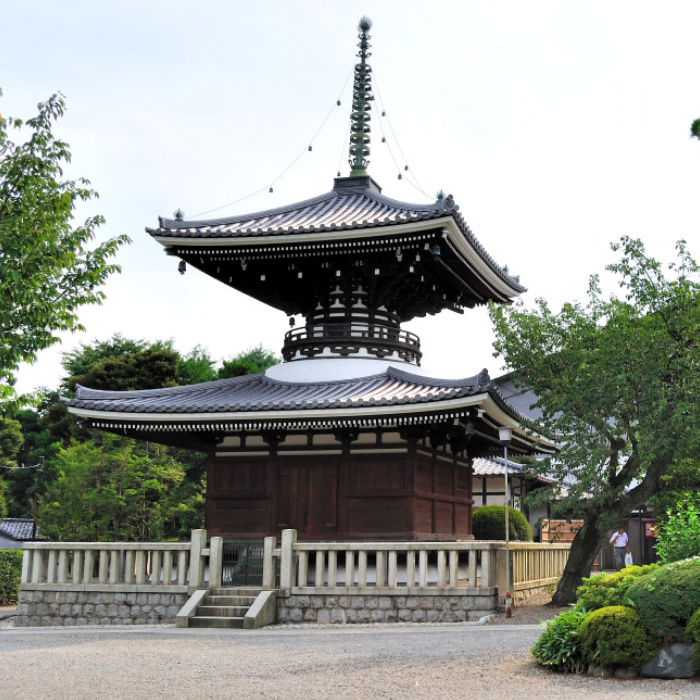

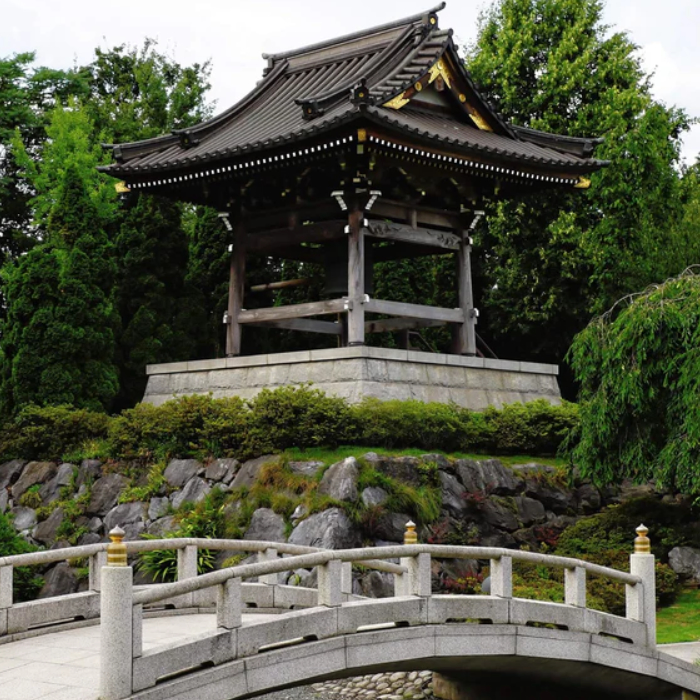

What is a gazebo?
A gazebo is a freestanding pavilion structure often octagonal or turret-shaped that will provide an area in your garden with partial shelter from the sun and rain. Gazebos usually have open sides and help to create great social areas for outdoor seating, and dining or they can function as a hot tub shelter. Gazebos are incredibly functional if you don’t have lots of shaded areas in your garden and you’ve like to create a protected area from all weather conditions. Gazebos can be manufactured from lots of different hard-wearing materials such as timber or metal and they’ll usually feature softer furnishings like curtains to create a more intimate space. Not only does a gazebo make a striking focal point to enhance any garden setting but they provide both privacy and protection from the elements whilst keeping garden furniture dry.
The differences summarised
If you’ve read this far then you’ll know there is a lot of crossover between these different garden structures. One of the key distinctions between the structures is how the roof is constructed or how it operates. Gazebos, pergodas and pagodas have permanent roof fixings while pergolas offer a more flexible set-up with an open roof that can be louvred in the open or shut position. No matter which model you choose they all provide a fabulous focal point for outdoor living areas and can help properly zone areas of your garden or patio. If you’re considering buying a pergola or pergoda then you should consider where in your garden you’ll position it, you’ll need a solid level base and a decent space around it so you can easily enter and exit the shaded area.

